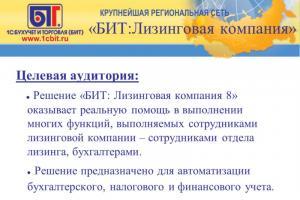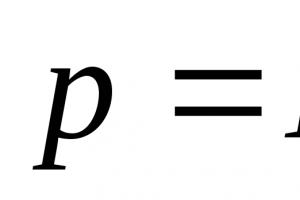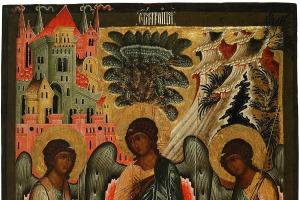February 4th, 2018
Everyone knows that Jews and Muslims do not eat pork, but few have wondered why they do it this way. Usually it all comes down to explanations that a pig is considered a dirty animal. But at the time when religions were born, the rest of the cattle were not much cleaner! And the people themselves often lived in terrible unsanitary conditions.
What's the matter?
Kashrut or kosher is a set of strict dietary restrictions based on the laws of the Torah and Talmud. Kosher allows you to eat meat only from animals that are both artiodactyls and ruminants - from sheep to giraffes.
However, the kosher prohibits eating pork and hare, because pigs do not chew cud, and hares do not have hooves. There was also an explanation for the behavior of “semi-kosher” animals: in a dream, pigs supposedly proudly expose their “correct” hooves, but hide their muzzles, and hares, on the contrary, tuck their paws out of shame.
The meat of kosher animals must be prepared by a professional butcher, a shochet, who slaughters the cattle in one special movement, never piercing the meat or delaying the movement of the knife. Shokhets undergo long training before taking up their duties.
There are a lot of laws for cutting meat in the Jewish tradition: it is important not only the participation of the shochet in the slaughter of livestock, but also the checking of the animal for diseases, which is performed by the mashgiach, and the cleaning of the carcass by the menaker from fat and veins, which are prohibited by kosher. The consumption of seafood is also strictly regulated: they must have scales and fins, that is, eating mollusks and crustaceans is strictly prohibited.
Every housewife is required to sift flour to prevent worms from getting into it and carefully inspect fruits and vegetables for larvae. The prohibition against eating insects gives only one exception: you can eat locusts (Lev. 11:22).
Kosher also prohibits eating foods containing blood (therefore, when cutting meat, they sprinkle it with salt, which absorbs it), bird eggs with identical, blunt or sharp ends (as a rule, eggs of birds of prey have identical ends), and alcohol, which is not made religious Jews, subject to many special rules. It is strictly forbidden to “cook a kid in mother’s milk” or mix milk with meat at one meal. However, it is hardly possible to check the kosher of already prepared food using formal methods, and therefore this right is usually given to the rabbi.
In addition, other peoples are tolerant of pigs, although these animals all over the world equally love to roll in the mud. So what's the catch then?
It turned out that even scientists were interested in this ban. They say that every food taboo in religion is easily explained in terms of common sense. This is not some whim of religious fanatics, but real precautions!
As an unclean animal, the pig is mentioned already in the Torah (9th century BC). The Jews' aversion to the pig was so strong that instead of the word "pig" they often said "davar acher", literally - "another thing", that is, something that it is better not even to call by its name.
The negative attitude of Jews and Muslims towards pigs is explained by the uncleanliness of these animals, which even eat their own excrement, and by the fact that in hot climates their meat quickly accumulates cadaveric poison. However, Jewish teachers of the law invariably emphasized that one should not look for any rational reasons here; the Lord’s motivation is hidden from man.
Ethnographers believe that the whole point is in the peculiarities of primitive beliefs, from which many taboos migrated to later formed religions. In animal-deifying totemism, one of the earliest religious systems, it is forbidden to pronounce the name or touch those of them that are considered the gods of the tribe.
Probably, among the Semitic peoples the boar was once such a god. The cult of bestiality was supplanted by the cults of anthropomorphic gods, but ritual taboos “by inertia” continued to operate. For example, our ancestors could not call the bear by its real name - ber, and this is how this “honey-witch”, that is, “honey connoisseur,” took root. By the way, the Slavs once also had a ban on eating bear meat.
It is worth saying that the Old Testament also says that you cannot eat pig meat, but how many Christians adhere to this prohibition?
The gastronomic preferences of Muslims are very limited. All food in Islam is divided into three groups: halal, makruh and haram, which correlate with Indian sattva, rajas and tamas, and of these, only halal is completely permitted for consumption.
The Koran, like the Torah, is primarily a set of laws that determines the life of Muslims. The Qur'an prohibits the consumption of pork, carrion, improperly slaughtered livestock (without mentioning the name of Allah) and blood (5:3). However, violation of the prohibition, as is often specifically indicated in the Koran, is possible in extreme cases: “If anyone, suffering from hunger, and not from a tendency to sin, is forced to eat what is forbidden, then Allah is Forgiving and Merciful.”
In addition, Islam prohibits killing animals without a reason, and some Muslim theologians believe that the profession of slaughtering livestock is sinful. Halal rules are less strict than kosher laws: Muslims do not have a special person who slaughters livestock, and the slaughter rules themselves are also slightly different from Jewish ones. On the other hand, Islam prohibits kosher-legal alcoholic beverages.
For Christianity, the taboo of food is less common and strict, but the sacralization of food is also typical. It is forbidden to eat something “sacrificed to idols,” that is, sacrificed by the pagans to the gods, foul eating, as well as - during fasting - meat, milk, eggs, butter, fish and some other products.
The absence of significant food taboos is due to the fact that New Testament abolished those prohibitions that were prescribed in the Old Testament and coincided with the already listed Jewish laws. According to the teachings of Christ, food cannot defile a spiritual person: “Eat everything that is sold at auction without any examination, for peace of conscience; for the earth is the Lord’s, and the fullness of it” (1 Cor. 10:25-27).
Hinduism is characterized by a refusal to eat beef, due to the fact that the cow is a sacred animal. Many followers of this religion adhere to ahimsa - a teaching that preaches non-violence, and, accordingly, a special vegetarian diet.
Followers of Jainism, another Indian religion, even wear special bandages over their mouths and sweep the road in front of them with a broom so as not to accidentally kill living beings. Needless to say, they do not eat them in any form. Hindus try not to eat rajasic foods - those that have too pronounced taste qualities, for example, coffee or tea, and tamas - “tasteless, stinking, stale”, such as meat, garlic or eggs.
The origins of kosher may lie in moral commandments. When cattle are slaughtered correctly, the animal dies almost painlessly. The taboo on eating blood may also be due to considerations of humanity and reluctance to shed blood as a symbol of the soul of God's creatures. The ban on eating birds of prey and their eggs is associated with the fear that the aggressiveness of predators will be transmitted to people. The Torah even says that before the great flood all people were vegetarians, but after that the Lord gave them animals to eat.
Also interesting is the possible interpretation of the ban on mixing milk and meat, which subsequently evolved into a taboo on eating them at one meal: meat, as a symbol of death and murder, should not be mixed with symbolic new life, that is, mother's milk, which promotes the growth of the young. It is possible that this taboo also reflected early religious ideas about the ban on boiling milk, since in them milk had a magical connection with its source, that is, it was part of the whole - a cow or goat. Accordingly, boiling milk was likened to boiling it in the udder, which was supposed to harm the animal and deprive people of milk yield.
In addition, many African tribes still have prohibitions on any mixing of milk and meat, including in the human stomach, which can be explained by fear for the health of the cow - after all, one of its dead parts, meat, is mixed with the living part, milk, and the cow symbolically eats itself, as a result of which its milk is polluted. It is likely that the ban on mixing milk and meat reflected the alienation of two types of crops - agricultural and cattle breeding, which competed with each other.
The ban on eating pork in Islam and Judaism was most likely a preventive sanitary and hygienic measure, since pork quickly deteriorates in conditions ancient world, deprived of refrigerators and modern medicine, could become a deadly dish. In addition, the pig, with its promiscuous sexual and food preferences and obvious love of dirt, generated symbolic identification with dirty, slovenly and sexually promiscuous people. Accordingly, eating its meat could promise a person’s acquisition of all of the above qualities. Sometimes a negative attitude towards pigs gave rise to funny cases: In the 18th century, some rabbis considered the tomato to be a pork fruit and forbade its consumption.
And the Indian ban on eating beef may be closely related to economic reasons: in India, cow dung was used for construction and heating purposes, they were used as draft animals and produced milk, which made them more valuable than any other animal. So the image of the nursing cow began to be sacralized, and in the 4th century AD. the ban on killing cows and bulls became official law.
The ban on bread and wine prepared by non-Jews refers to the desire of the Jews to consolidate fellow believers and prevent the assimilation of other peoples. Accordingly, at any festival organized by representatives of other religions, it will be very difficult for a Jew to keep kosher. IN modern cultures similar socially determined reasons for the prohibition of food in Judaism or Islam play vital role for religious unity.
Sources:
What is kashrut
The word kasher (כשר) means, translated from Hebrew into Russian, “suitable” for something. Today, this word is most often used in combination with kosher food, which is the name given to food prepared in accordance with the laws of Jewish tradition. The set of these laws is called in Hebrew - kashrut (כשרות).
Kashrut is a rather extensive system of laws. But it is based on only a few commandments known from the Torah, and some additional rules established by Jewish sages at a later time.
Once again, we note that the complete system of kashrut rules is quite complex. Therefore, we are not even trying to give a “guide” to kashrut, but will only try to find out what tradition means when talking about kosher food.
Review questions
What does the word "kosher" mean?
What is "kosher"?
What is it based on?

Basic principles
We can briefly list the basic principles of kashrut:
- it is allowed to eat meat only of certain (kosher) species of land animals, birds and fish;
- an animal whose meat is used for food must be killed, prepared and butchered in a special way;
- you cannot mix meat and dairy foods;
- there are certain requirements for eating fruits grown by Jews in Eretz Israel,
- There are additional restrictions on some other products.
Let's look at these principles in more detail.
Review questions
What are the basic principles of kashrut?
Forbidden food First of all, what meat of animals, birds and fish can, in principle, be used to prepare kosher food?
Precise instructions on this matter are contained in the Torah, in the 11th chapter of the book “Vayikra”. And they are formulated in the form of prohibitions and permissions, so dividing animals into permitted and prohibited is a commandment.
In accordance with the instructions, permitted, kosher, land animals (as well as birds and fish) are called clean in the tradition, and unauthorized ones are called unclean.
Probably the most famous of the unclean (forbidden to eat) animals is the pig: almost everyone has heard that Jews do not eat pork. However, not everyone knows that Jewish tradition also prohibits eating, for example, rabbit or crabs.
Further, all insects, amphibians and reptiles are considered unclean. And if in Russia such food is practically not accepted, then in some other countries it is very popular (for example, frogs in France).
The following principle should also be kept in mind: the product of an unclean animal is also unclean. What is "product of animal"? This is, for example, milk. Therefore, tradition prohibits the use of, say, camel milk (which is drunk in some countries Central Asia), since the camel is a non-kosher animal (see below). For the same reason, turtle eggs are prohibited: after all, a turtle is a reptile, and therefore not kosher.
There is only one exception to this rule - honey. It is kosher, although it is a waste product of insects - bees.
There is no such thing as “unclean plants”. All types of fruits, vegetables, mushrooms, and berries are kosher. There are, however, some subtleties associated with the fruits of Eretz Israel. We will talk about them later.
Let us now consider in more detail the division into clean and unclean among animals, birds and fish.
Review questions
What are “clean” and “unclean” animals?
Where in the tradition is the source of such a division?
What types of living beings does this division apply to? Which types of living beings are definitely non-kosher and which are kosher?
Animal meat
For animals, the criterion is formulated in the book “Vayikra”: “An animal can be eaten if it is ruminant and artiodactyl.”
Thus, “pure” animals are, for example, a cow, a sheep, a goat, a deer. Their meat is kosher if properly prepared (see below).
Unclean animals are, for example, as mentioned above, a pig (not a ruminant), a rabbit and a camel (no cloven hooves). Other examples are the horse, the seal, all predatory animals. The meat of such animals is prohibited for food and cannot be made kosher through any processing.
Review questions
How and where was the rule dividing animals into clean and unclean formulated?
Give examples of clean animals.
Give examples of unclean animals and explain why they are not kosher.
Birds
The list of birds whose meat is forbidden to eat is given in the Torah in the book “Vayikra” (11:13-19). These are all birds of prey (eagle, kite, owl, etc.), as well as stork, crow, seagull, pelican, hoopoe and some others. Accordingly, it is prohibited to eat the eggs of these birds.
The question arises: why is a list of “unclean” given only for birds, but exact criteria are not established, as for animals (which we just talked about) or for fish (see below), what is considered clean and what is unclean?
The answer, apparently, is this: although this list is long, there were apparently more clean birds than unclean ones.
Unfortunately, in the time that has passed since the giving of the Torah, Jews have settled throughout the world. Over time, it has sometimes become difficult to determine exactly what species of bird this or that name mentioned in the TaNakh refers to - what bird does it correspond to? Therefore, Jewish communities chose for food only those species of birds whose species they were sure of identifying.
Today, Jews consider all poultry clean: chicken, goose, turkey, duck.
In order to become kosher, poultry meat must also be processed special treatment.
Review questions
How and where is it stated which birds are unclean?
What is special about this formulation? How can this be explained?
Give examples of kosher and non-kosher birds.
Why are so few bird species eaten by Jews today?
Is their meat automatically kosher?
Kosher meat
Just because a cow is a kosher animal does not mean that any piece of beef in a store is kosher. The Torah also prohibits eating:
- meat of an animal that died a natural death; such meat is called nevela (נבלה – “carrion”); This concept also includes the meat of an animal that was sick before slaughter;
- meat of an animal wounded or killed by another animal or while hunting; such meat is called taref (טרף - “torn”), and hence the often used common name for non-kosher food - tref;
- meat of an animal that still has blood in it;
- some parts of the carcass (greasy fat and sciatic nerve).
What conclusions do these prohibitions lead to?
Firstly: an animal (allowed, of course) must be killed only in a special way, called shechita (שחיטה). The essence of shechita is that the animal is killed with one blow of a knife, cutting the carotid artery. This ensures that the animal dies without suffering. A person who knows how to produce shechita is called shochet (שוחט – “carver”).
If an animal is killed in any other way, Jews are forbidden to eat its meat.
Secondly: after shechita, a check of the carcass must be done. If it turns out that there was serious damage to the animal’s body, its meat is not kosher. The one who inspects the carcass is called bodek (בודק) in Hebrew.
Third: the greasy fat and sciatic nerve must be removed from the carcass. The person who performs this work is called a menaker (מנקר).
Shohet, bodek and menaker are professions that require special training.
Review questions
When is meat from a clean animal considered non-kosher?
What are "nevela" and "clubs"?
What is the name of the slaughter of livestock permitted by kashrut and what is its essence?
What professions are associated with it?
Meat processing
And finally, fourthly: blood must be removed from the meat. It would be interesting to know what the reasons for this requirement are.
The Torah categorically prohibits everyone (not just Jews) from eating part of the body of a living creature: this is one of the seven commandments of the sons of Noah, that is, commandments for all humanity. For Jews, this requirement is clarified: since blood is a sign of animal life, the Torah (Devarim 12:23) forbids Jews to eat blood, and, therefore, they cannot eat meat in which blood remains.
How to remove blood from cut meat? Tradition allows two ways:
1) “salting”: fresh meat is washed in water, then covered with coarse salt for an hour; during this time, the salt absorbs the blood, after which the meat is washed again;
2) roasting meat over an open fire.
Let us remind you that all these requirements apply only to animal and poultry meat. But - not to fish.
Review questions
Why must blood be removed from meat?
How can you remove blood?
Meat and dairy
There is a ban that ( unique case!) is mentioned three times in the Torah. This is the prohibition: “Do not boil a kid in its mother’s milk” (Shemot, 23:19, Shemot, 34:26, Devarim, 14:21). The imperative form of the phrase indicates that this is a commandment. Tradition clarifies that repeating a phrase three times implies three prohibitions:
- you cannot cook meat and milk together;
- you cannot eat meat and milk together;
- You cannot use meat and milk mixture in any way.
What does the word "meat" mean in these prohibitions?
This is any meat of animals and birds (but not fish!), as well as everything related to this meat - for example, fat (beef, chicken, etc.).
“Milk” is not only milk itself, but also any dairy products: cheese, cottage cheese, butter, kefir, sour cream, milk margarine, etc.
Thus, according to Jewish tradition, not only cooking meat in milk is unacceptable, but also mixing meat and milk parts in any food in general is unacceptable.
Each component food product can be either meat, or dairy, or neutral (for example, fish, fruits, vegetables, mushrooms, eggs, honey, sugar, salt, flour, vegetable oil and etc.). Therefore, each kosher product can belong to one of three types:
- “meat” (bsari – בשרי): if it contains at least some meat components;
- “milk” (halavi – חלבי): if it contains at least some milk components;
- “neutral” (parve – פרווה): if it contains neither meat nor dairy components, but only “neutral”.
For example: a sandwich with sausage is a meat food (flour + meat), a sandwich with butter is a dairy food (flour + butter), and a sandwich with honey is parevnaya.
Since digestion of food takes some time, tradition prohibits eating dairy products immediately after meat - it is necessary to take a certain break. The duration of this break (between meat and dairy food) is set differently in different communities: from three to six hours.
But after drinking milk you don’t need to wait that long: just rinse your mouth, for example, and you can eat meat.
Review questions
How many times does the Torah prohibit mixing meat and milk?
What conclusions does tradition draw from this?
What three types are all kosher foods divided into?
What is "parve"?
 Fish
Fish
There, in the book "Vayikra", it is said: "... of all those who live in the water, you can eat those who have scales and fins ..." (11: 9-12).
Thus, all “non-fish” living in the water are unclean: mussels, oysters, squid, crabs, crayfish, shrimp, etc., as well as some fish (without scales): catfish, sturgeon, shark, eel, etc. Accordingly, sturgeon (black) caviar is non-kosher.
The vast majority of fish (except predatory ones) are clean. Unlike animal and poultry meat, clean fish is automatically kosher: it does not need to be subjected to any special processing. The caviar of these fish is kosher.
Let us remind you once again that fish is a parevous food; there is no ban on fish and dairy dishes (for example, pike in sour cream was very popular in Eastern European communities). At the same time, tradition does not recommend eating fish at the same time as meat - for medical reasons.
Review questions
Where and how is the definition of kosher for water-dwelling creatures formulated in the Torah?
Give examples of non-kosher ones.
Does fish, like animal and poultry meat, require additional processing?
Is it forbidden to mix fish and dairy foods?
Fruits and vegetables in Eretz Israel
Fruits and vegetables grown by Jews in Eretz Israel deserve several separate commandments in the Torah. The essence of these commandments boiled down to:
- obligations to separate part of the harvest for the benefit of the poor;
- duties to separate part of the harvest for the Temple;
- a ban on using the fruits of the first three years of tree harvest;
- rest of the earth every seventh year.
Some of these requirements can be transferred to today without changes (for example, a ban on the use of fruits of the first three years), some are now impossible to fulfill literally (for example, separating part of the harvest for the Temple, since there is no Temple today), and therefore they are fulfilled only symbolically . The complete system of laws associated with the fulfillment of these commandments in our day is not at all simple, and it is difficult for the average person to understand it. Therefore, in the State of Israel today the Rabbinate deals with these issues. Anyone who wants to observe these commandments relies on the inspection of some rabbinate and buys fruits that have been inspected by that inspection.
Let us remind you once again: we are talking only about fruits grown by Jews in Eretz Israel! For example, these commandments have nothing to do with apples located near Moscow.
Review questions
What commandments lead to kashrut restrictions on plant foods?
Are they all literally doable today?
What fruits do they belong to?
Special Products
In addition to the above, there are special kashrut requirements for some special products. These requirements are not commandments, but restrictions, in different time established by Jewish tradition. Such restrictions are called gzerot (גזירות) in Hebrew.
The most significant of the gzerots are located on:
- non-Jewish grape wine or any other grape drink (this prohibition does not apply to drinks not made from grapes);
- cheese made in the usual way (this uses special enzymes that help curdle the milk mass, and these enzymes may not be kosher).
Review questions
What is "gzerot"?
Are they commandments?
Give the types of gzerot for kashrut.
Dishes
Jewish tradition requires that the utensils in which food is prepared must also be kosher. What does it mean? How can dishes even become non-kosher?
Firstly, this can happen if there was hot, non-kosher food in the dish. It is clear that in a house where the rules of kashrut are observed, most likely there will not be such food. However, if you have to eat at a party, in a restaurant, etc., this becomes a serious requirement.
Secondly, since tradition prohibits any mixing of meat and dairy, in Jewish homes there are different sets of dishes - for meat and dairy, and sometimes for parev food. Not only are meat and dairy foods not prepared together, they cannot even be served on the same table at the same time.
These kosher requirements apply to all types of utensils: pots, plates, cups, spoons, knives, frying pans, oven trays, meat grinders, etc.
Review questions
What is "kosher utensils"?
When does a dish become non-kosher?
How do they solve this problem in Jewish homes?
Kosher food
To summarize what we already know about the rules of kashrut: a food is kosher if it:
- prepared from products permitted by kashrut rules and in kosher dishes;
- its meat components (parts) have undergone special processing;
- during its preparation, dairy and meat foods were not mixed.
Review questions
What is "kosher food"?

Kashrut today
Has it become difficult or easy to follow the rules of kashrut today? The answer to this question is ambiguous.
On the one hand, in Israel and other Western countries with significant Jewish communities there is a modern food industry that is able to produce any quantity of any kosher product. In Israel, for example, the vast majority of businesses Food Industry They only produce kosher food, there are many kosher restaurants, cafes, etc. A large number of kitchen appliances have simplified the process of cooking at home.
On the other hand, the rhythm of life has noticeably increased compared to what it was a hundred or two hundred years ago. If earlier, for example, when buying meat in a store, a Jew personally knew the shochet and could rely on his shechita, today tons of such meat are sent daily to every Israeli supermarket. It’s hard to imagine what will happen if everyone who buys this meat in a supermarket wants to personally get acquainted with the shochets of this company! But what about the person who lives in a community that does not have its own shochet?
In addition, when using different products, you have to monitor whether there is blood in eggs, and whether there are worms in fruits (both of these automatically make the products non-kosher). Today, every housewife uses a lot of semi-finished products in her kitchen: canned food, mayonnaise, frozen dough, etc. How can you find out whether all these semi-finished products were made taking into account the requirements of kashrut?
For this purpose, in the Jewish world today there are special organizations dealing with kashrut issues. If a company wants kosher-observing Jews to eat its products, it enters into an agreement with one of these organizations. According to this agreement, the organization carries out inspection (in Hebrew hashgaha - השגחה) compliance with kashrut requirements throughout the entire production process. And if all the requirements are met by the company, the organization puts its seal on its product - hekhsher (הכשר - “kosher certificate”). And since such organizations are usually led by well-known and respected people, the Jews who rely on their opinion know: this product is kosher.
But what about in a restaurant where food is not prepared automatically, but as orders from visitors arrive? To do this, you need to constantly monitor the fulfillment of the requirements of kashrut, so just hekhsher is not enough. and the restaurant hires a kashrut-versed inspector (mashgiach - משגיח) who supervises all work.
In the State of Israel, kashrut issues are mainly dealt with by the Chief Rabbinate and some other organizations. In all government institutions(including in the army) observance of kashrut is mandatory, as stipulated by Israeli laws.
Review questions
Why can we say that today it is easier to fulfill the requirements of kashrut than before?
What new problems have arisen these days?
How are they resolved in Jewish communities?
What are "hashgaha" and "mashgiach"?
What is "hechsher"?
The meaning of kashrut
Once you have the basics about kashrut, it is useful to stop and ask: what is the point of all these rules?
There are different answers to this question.
First of all, the one who says is right: the commandments underlying kashrut are hukim. Let us remind you (see section 2) that it is impossible to find a logical basis for hukim; tradition transmits these laws to the Jewish people. A Jew for whom “the Torah is the way of life” keeps kashrut for the same reason that he keeps Shabbat: because these are the commandments. And there is no other explanation for the laws of kashrut.
However, many are inclined to seek explanations for the laws of kashrut in medicine, dietetics and biology. The possible connection between these sciences and the requirements of kashrut was emphasized by RamBaM. Today, numerous new theories have emerged, according to which mixing meat and milk, eating leftover blood, meat of predatory animals, birds and fish are harmful to health. Perhaps these theories are correct - after all, the very millennia-long existence of the Jewish people shows that the Torah, in any case, did not require anything that could harm human health. However, already Ramban (the largest Jewish thinker of the 13th century; lived in northern Spain and was, in particular, a famous doctor) polemicized with this point of view, pointing out that in this case these commandments should be addressed to all humanity, and not just to Jews. So it is unlikely that these theories explain the true, inner meaning of the commandments of kashrut.
Jewish sages found a hint of the irrational (that is, inaccessible to the human mind) meaning of the commandments associated with kashrut in the Torah. There, in the book “Vayikra”, after listing the commandments naming “unclean” animals, the Torah adds: “Do not defile your souls... and you will not become unclean, as they [the forbidden animals] are unclean” (Vayikra 11:43). From this, the sages concluded that the concept of an “unclean” animal has a deep inner meaning: such an animal carries within itself something that can harm not the body, but the soul of a person. For example, RamBaN believes that the ban on the meat of predators is due precisely to the fact that they are predators, and therefore their meat can convey to a person such qualities as cruelty.
The same applies to other requirements of kashrut: even those who are far from tradition will agree that Jewish psychology was influenced both by the ban on hunted meat and by the fact that for hundreds of generations no Jewish child saw it mother killed a chicken.
In a broader sense, we can say this: man is undoubtedly a biological being. In order to live, it must perform many functions that are also characteristic of other biological beings (that is, animals) - in particular, eating. But if a person wants to rise above the level of an animal, he must introduce moral considerations even into such an “animal” action as eating: in order to be morally pure, he must be physically pure. In different moral systems they try to do this in different ways: for example, in the entire Western (and not only Western) civilization, cannibalism (eating human flesh) is prohibited; in Russia, hardly anyone will eat snakes - and not for dietary reasons, but because they are snakes; finally, there are vegetarians, etc. The source of the Jewish (including moral) tradition is the Torah. Therefore, kashrut - the Jewish system of food restrictions - is built on the commandments of the Torah.
And one more consideration: there is no doubt that kashrut really helps the unity of the Jewish people. What does a traditional Jew do when he comes to a new place? To find kosher food, he must first find local Jews. If he is staying in a hotel, he will most likely prefer a place that has a Jewish restaurant nearby; will be able to dine only in the home of traditional Jews, etc. As a result, kashrut automatically leads to the fact that the Jew in each place strengthens ties with other Jews.
ъBLPOSH ECHTEKULPZP RYFBOYS
uOBYUBMB P NSUOPK RYEE: UPZMBUOP fPTE, LBYETOCHNY, FP EUFSH, RTYZPDODOSCHNY L KHRPFTEVMEOYA CH RYYKH, SCHMSAFUS TsChBYUOSHE RBTOPLPRSHFOSH NMELPRYFBAEYE.
x TSCHBYUOSHI TSYCHPFOSHCHI RETETSECHBOOBS PDYO TB RYEB CHRPUMEDUFCHYY RPDOINBEFUS YY TSEMKHDLB Y YUETE ZPTMP CHOPCHSH RPRBDBEF CH TPFPCHHA RPMPUFSH. fBLYN PVTBBPN, TsChBYUOPE TSYCHPFOPPE RETETSECHCHCHBEF Y ZMPFBEF PDOKH Y FH TSE RYEH DCHBTDSCH.
rBTOPLPRSCHFOSHNY OBSCHCHBAFUS TSYCHPFOSCHE U TBBDCHPEOOOSCHNY LPRSCHFBNY.
rTIZPDODOSCHNY CH RYEH NMELPRIFBAEINY SCHMSAFUS TsCHBUOSCH RBTOPLPRSHFOSH: LPTPCHB, LPUB, PCHGB, PMEOSH, MBOSH, ЪХВТ, МПУШ, BOФИМПРБ, ВЪПО.
fBLPE TSYCHPFOPE, LBL UCHIOSHS SCHMSEFUS RBTOPLPRSHFOSHN, OP OE TSCHBUOSCHN - RPFPNH OELBYETOP. PUEM, CHETVMAD, MPYBDSH OE YNEAF TBBDCHPEOOOSCHI LPRSCHF.
bOBMPZYUOP, ECHTEKULBS FTBDYGYS ЪBRTEEBEF KHRPFTEVMEOYE CH RYEH OERBTOPLPRSCHFOSCHI NMELPRYFBAEYI: LTPMYLPCH, ЪBKGECH, VBTUKHLPC, OKHFTYK, DYLPVTBЪPCH, UPVBL, PVE ЪШСО, UMPOPC, NEDCHEDEK, MSCHPC, MYUYG, CHPMLPCH, VEZENPFPC, OPUPTPZPC.
YOFETEUOP, YFP CHUE CHYDSCH NMELPRYFBAEYI, RPDRBDBAEYI RPD PRTEDEMEOYE LBYETOPUFY, YNEAF TPZB (IPFS VSH FPMSHLP KH UBNGB) Y OY PDO YЪ UKHEEUFCHHAEYI CH OBUFPSEE CHTENS TOSHI CHYDHR TPZHR OE YNEEF.
oBMYUYE TPZPCH NPTsEF UYUYFBFSHUS CHOEYOIN RTYOBLPN RTYZPDOPUFY NMELPRYFBAEEZP CH RYEH - TPZB EUFSH FPMSHLP KH TsChBYUOSCHI RBTOPLPRSCHFOSHI NMELPRYFBAEYI. rTYNEYUBFEMSHOP, YuFP TSYTBZH YNEEF RTYOBLY LBYETOPZP TSYCHPFOPZP (Y CHURPNPZBFEMSHOSHCHK RTYOBL - NBMEOSHLYE TPTSLY, RTYLTSHCHFSHCHE UMPEN LPTSY), OP RP KHUFBOPCHYCHYEKUS FTBDYGYY, N SOUP LFPPZP CYCHPFOPZP CH TBGYPO ECHTES OE CHIPDIF.
lBYEKHOCHNY CHYDBNY UTEDY RFYG FTBDYGYPOOP SCHMSAFUS LHTYGB, YODAL, HFLB, ZHUSH, RETEREMLB, ZPMHVSH Y TSD DTHZYI.
fBLYE RFYGSH LBL UFTBKHU, CHPTPOB, YUBKLB, RPRKHZBK OELBYETOSCH. oelbyetosch FBLCE CHUE IYEOSCH RFYGSH Y RFYGSH RYFBAEYEUS RBDBMSHA. h ECHTPREKULYI PVEYOBY OE RTYOSFP KHRPFTEVMEOYE RFYG PYUEOSH NBMEOSHLPZP TBNETB (OBRTYNET, UPMPCHEK)- YЪ-ЪB UMPTSOPUFY HVPS ("YIIIFSHCH") RP RTBCHYMBN, OP CH CHPUFPYUOSCHI PVEYOBY UPITBOYMBUSH FTBDYGYS RPFTEVMEOYS FBLYI RFYG.
fPTB ЪBRTEEBEF KHRPFTEVMEOYE LTPCHY CH MAVSHHI EY ZHTNBI (ЪB YULMAYUEOYEN LTPCHY TSCHV). dMS KHDBMEOYS LTPCHY YY NSUB TsYCHPFOPZP UKHEEUFCHHEF, PE-RETCHSHI, RTPGEDHTB HVPS TsYCHPFOPZP.
TEJOIL (“YPIPF”), PVMBDBAEYK PUPVPK LCHBMYZHYLBGYEK, PUEOSH
FPYuOSCHN DCHYTSEOYEN UREGYBMSHOPZP PUFTTPZP OPTSB RETETEBEF ZPTMPCHHA BTFETYA FBL, UFP PUOPCHOBS YUBUFSH LTPCHY UTBH TSE CHSHCHIMEUFSHCHBEFUS OBTHTSKH, B TsYCHPFOPE NNEOFBMSHOP CH RBDBEF CH YPL YENH OE RTYYUYOSAFUS NHYUEOYS (UFP ЪBRTEEEOP ECHTEKULIN ЪBLPOPN).
rPUME HVPS RTPYCHPDYFUS TBDEMLB FKHYY, RTY LPFPTPK FEBFEMSHOP PUNBFTYCHBAFUS CHOKHFTEOOYE PTZBOSH DMS CHSHCHCHMEOYS UCHYDEFEMSHUFCH VPMEYOY TSYCHPFOPZP.
h UMKHYUBE EUMY TSYCHPFOPE SCHMSMPUSH VPMSHOSCHN, RHUFSH DBTSE ABOUT OBYUBMSHOPK UFBDYY VPMEYOY, EZP NSUP OERTIZPDOP CH RYEH. bOBMPZYUOP, EUMY LBYETOPE TSYCHPFOPE VSHMP ЪBVYFP LBLYN-MYVP DTHZYN URPUVPVPN YMY TBUFETBOP DTHZYN TSYCHPFOSCHN, EZP OEMSHЪS KHRPFTEVMSFSH CH RYEH. rPFPNH ECHTEA OEMSHЪS EUFSH NSUP TSYCHPFOSHI, KHVYFSHI ABOUT PIPF.
DMS NBLUYNBMSHOPZP KHDBMEOYS LTPCHY YURPMSH'HAFUS DCHB URPUPVB: RTPUBMYCHBOYE YMY RTPTSBTYCHBOIE ABOUT PFLTSCHFPN PZOE.
UPCHENEOOPE RTPYCHPDUFCHP RPJCHPMSEF RTPCHPDYFSH RTPUBMYCHBOYE CH RTPNSCHYMEOOOSCHI PVAENBI Y RPFPNKH CH RTDPDBTSE NPTsOP LHRYFSH PVEULTPCHMEOOPE
NSUP ("NHIYBT") U UPPFCHEFUFCHHAEEK OBDRYUSHA ABOUT KHRBLPCHLE YMY.
EUMY CE CHCH RPLHRBEFE OEPVEULTPCHMEOOPE NSUP ("MP NHIYBT"), FP EGP RTPUBMYCHBOIE NPTsOP RTPCHEUFY CH DPNBOYI HUMPCHYSI.
DMS LFPPZP NSUP CHSHCHDETTSYCHBAF OE NEOEE RPMKHYUBUB (OP OE VPMEE UHFPL!) H IMPPDOPK CHPDE, ЪBFEN EZP RPUSCHRBAF LTHROPK UPMSHA (RPCHBTEOOPK), LPFPTBS CHRYFSHCHCHBEF PUFBFLY LTPCHY. nSUP OEPVIPDYNP RPMPTSYFSH ABOUT OBLMPOOOP RPUFBCHMEOOHA DPUFPYULH, RPNEEEOOHA OBD ENLPUFSHA, YUFPVSHCHSHCHFELBAEBS LTPCHSH NPZMB UFEYUSH CH UFH ENLPUFSH. fBL NSUP CHSHCHDETTSYCHBEFUS CH FEYUEOOYE YUBUB, RPUME YEZP PVNSCHCHBEFUS RPD UFTHEK.
rPDZPFPCHMEOOPE FBLYN PVTBBPN NSUP NPTsOP RPDCHETZBFSH MAVSHCHN CHYDBN LHMYOBTOK PVTBVPFLY: CHBTYFSH, TsBTYFSH (GEMYLPN YMY YUBUFSNY), RETENBMSCHCHBFSH, FHYYFSH Y F. D.
URPUPV RTPTSBTYCHBOYS ABOUT PFLTSCHFPN PZOE RPЪCHPMSEF PVEULTPCHYFSH NSUP VEЪ RTEDCHBTYFEMSHOPZP RTPUBMYCHBOYS.
rTY RPNPEY RTPTSBTYCHBOYS NPTsOP RTYZPFPCHYFSH REYOOSH TSYCHPFOPZP. rEYEOSH ("LBCHD"), SCHMSSUSH LTPCHEFCHPTOSCHN PTZBOPN, UPDETSYF VPMSHYPE LPMYUUEUFChP LTPCHY Y, LTPNE FPZP, YЪ-ЪB UCHPEZP UFTPEOYS OE NPTsEF VShchFSH PFLBYETPCHBOB RTPUBMYCHBOYEN. fBLYN PVTBBPN, REYUEOSH NPTsOP RTYZPFPCHYFSH FPMSHLP RTPTSBTYCHBOYEN ABOUT PFLTSCHFPN PZOE Y EBFEN, RTY TSEMBOYY, RPDCHETZOKHFSH DBMSHOEKYEK LHMYOBTOPK PVTBVPFLE .
fPTB ЪBRTEEBEF ECHTESN KHRPFTEVMSFSH CH RYEH OKHFTSOPK TsYT NMELPRYFBAEYI ("IMBCH"), B FBLCE PUPVHA TSIMKH YЪ ЪBDOYI LPOYUOPUFEK TSYCHPFOSHHI ("ZYD BOTH").
xDBMEOYE LFYI BMENEOFPCH RTPYUIPDYF ABOUT UFBDYY TBBDEMLY FHYY Y CH NBZBYOSCH SING OE RPRBDBAF.
PUFBMSHOSHE YUBUFY CYCHPFOPZP RTYZPDOSCH CH RYEH: NPIZ, MEZLYE, RPYULY, LYYYLY, RFYUSHY RHRLY, LPTSYGB, UEMEYEOLB Y F. D.
rPRHMSTOSCHK ABOUT chPUFPLE LHTDAYUOSCHK CYT ("BMSHS") SCHMSEFUS LBYETOSCHN, ЪB YULMAYUEOYEN OEVPMSHYPK YUBUFY, TBURPMPTSEOOPK CHP'ME LPUFY (LFB YUBUFSH - OKHFTSOPK TsYT) Y Ј FBLCE HDBMSAF ABOUT UFBDYY TBDEMLY FKHYY.
nPMPLP LBYETOSCHI TSYCHPFOSHCHI RTYZPDOP CH RYEH ECHTES Y, UPPFCHEFUFCHEOOP, NPMPLP OELBYETOSCHI - EBRTEEOP.
lFP PFOPUYFUS LBL L NMPPLH, FBL Y L NMPYUOSCHN RTPDHLFBN: FChPTPZ, USCHT, UNEFBOB Y F. D. fBL, OBRTYNET, ECHTESN OEMSHЪS RYFSH RPRKHMSTOSCHK KH NOPZYI OBTPDPC LHNSCHU (NPMPLP LPVschMG).
hSHNS ("BFYO") LBYETOSCHI TsYCHPFOSHHI NPTsOP KHRPFTEVMSFSH CH RYEH, OP DMS bFPZP EZP OEPVIPDYNP RPDCHETZOKHFS PUPVK RTEDCHBTYFEMSHOPK RPDZPFPCHLE (OE RTPUBMYCHBOYA); Y ЪBFEN - RTPTSBTYCHBOYA ABOUT PFLTSCHFPN PZOE. rTPCHEDEOYE RTEDCHBTYFEMSHOPK RPDZPFPCHLY CHSHNEY PYUEOSH ЪBFTKhDOEOP CH DPNBIOYI HUMPCHYSI, Y RPFPNH EZP MHYUYE RPLHRBFSH PFLBYETPCHBOOSCHN.
rTPTSBTEOOPE ABOUT PFLTSCHFPN PZOE CHCHNS ЪBRTEEEOP RPDCHETZBFSH DBMSHOEKYEK LKHMYOBTOPK PVTBVPFLE: CHBTYFSH, FHYYFSH, TsBTYFSH.
h ECHTEKULPK FTBDYGYY UHEEUFCHHEF UFTPTSBKYYK EBRTEF ABOUT UNEYYCHBOYE NSUOSHI Y NPMPYUOSHI RTPDKHLFPCH, DBCE EUMY LFB UNEUSH ZPFPCHYFUS OE DMS KHRPFTEVMEOYS CH RYEH, B DMS FEIOYUUEULYI OHCD.
dMS Y'VETSBOYS UMHYUBKOPZP PVTB'PCHBOYS FBLPK UNEUY CH ECHTEKULYI DPNBI RTYOSFP RPMSH'PCHBFSHUS TB'DEMSHOPK RPUKHDPK (CHLMAYUBS OE FPMSHLP LBUFTAMY, LBBOSCH Y RTPFYCHOY , OP Y FBTEMLY, YUBYYY, CHYMLY, OPTSY, MPTsLY Y F. D. - CHRMPFSH DP ZHVLY DMS NShFSHS RPUKhDSCH).
h ECHTEKULPN DPNE NPTsOP KHUMSHCHYBFSH FBLYE "UFTBOOSCHE" PRTEDEMEOYS LBL "NSUOPK OPTs", "NPMPYUOSCHK RPMPCHOIL" YMY "RBTECHOBS (OEKFTBMSHOBS) MPTsLB".
h fBMNKHDE RTYCHPDYFUS RTYNET P LBRME NMPPLB, RPRBCHYEK CH LBUFTAMA U ZPFPCHSEENUS NSUPN. uYUYFBEFUS, YuFP EUMY LPMYUEUFChP NSUOPK RYEY CH 60 TB RTECHSHCHYBEF LPMYUUEUFChP UMHYUBKOP RPRBCHYEZP CH OEЈ NPMPYUOPZP BMENEOFB, FP FBLBS RYEB PUFBEFUS RTYZPDOPK. fBLPZP TPDB RTPVMESCH NPZKhF CHP'OILOHFSH YЪ-ЪB OEBLLKHTBFOPUFY ABOUT LHIOY - OBRTYNET, "NSOOBS" LBUFTAMS VSHMB OBLTSCHFB "NPMPYUOPK" LTSHCHYLPK. h FBLYI UMKHYUBSI RTYOSFP PVTBEBFSHUS ЪB UPCHEFPN L TBCHCHYOH.
rPUME KHRPFTEVMEOYS NSUB RTYOSFP CHSHCHDETTSBFSH RBHЪKH RTYNETOP CH 6 YUBUPCH Y FPMSHLP RPUME bFPZP KHRPFTEVMSFSH NPMPYUOHA RYEH. OP RPUME KHRPFTEVMEOYS NMPPLLB RBKHB CHSHCHDETSYCHBEFUS RTYNETOP CH FEYUEOYE 20 NYOHF Y UBFEN, RTPRPMPULBC TPF, NPTsOP EUFSH NSUOKHA RIEKH - ZMBCHOPE, YuFPVSH RTPYPYMP YueFL PE TBDEMEOYE NETSDH FTBREBNY.
pDOBLP RPUME KHRPFTEVMEOYS FCHЈTDSCHI USHTTPCH RTYOSFP CHSHCHDETTSYCHBFSH DMYOOHA RBHЪKH.
h ECHTEKULYI DPNBI RTPDHLFSCH Y ZPFPCHBS RYEB DEMSFUS ABOUT FTY ZTHRRSH: NSUOSHE, NPMPYUOSHE Y "RBTCHE"(OH NSUOSCH OE NPMPYUOSCH).
rTPDKHLFSCH, PFOPUSEYEUS L "RBTCHE", NPTsOP KHRPFTEVMSFSH LBL U NSUOPK RYEEK, FBL Y U NPMPYUOPK.
chBTsOP PFNEFYFSH, YuFP TBTEYЈOOPE CH RYEH NPMPLP LPTNSEEK TsEOEYOSCH UYYFBEFUS "RBTCHE."
eChTEA TBTEYEOB CH RYEH MAVBS TBUFYFEMSHOBS RYEB (OBENOBS YMY CHPDOBS).
tBUFYFEMSHOHA RYEH NPTsOP RPFTEVMSFSH LBL CH USHTPN, FBL Y CH PVTBVPFBOOPN CHYDE. KHUMPCHYE RPFTEVMEOYS - FEBFEMSHOSHCHK PUNPFT Y RTPNSCHCHLB U GEMSHA KHDBMEOYS OBUELPNSHCHY YI MYUYOPL. OBRTYNET, CH OPTSLKH ZTYVB Refinery RPRBUFSH YUETCHSYUPL YMY TsKHYUPL. DMS EZP KHDBMEOYS NPTsOP CHSHCHDETTSBFSH ZTYVSH CH UPMEOPK CHPDE - CHTEDYFEMY RTY LFPN PLBTsKHFUS ABOUT RPCHETIOPUFY. YuETCHSYUPL NPTSEF PLBBBFSHUS Y PE ZHTHLFBI - RPPFPNH RMPD TSEMBFEMSHOP TBBTEBFSH ABOUT YUBUFY, YuFP PUPVEOOOP CHBTsOP RTY RTYZPFPCHMEOY CHBTEOSHS YMY LPNRPFB.
lTHRSCH, YETOB, VPVPCHSHCHE YMY YURPMSHKHENSHCHE CH RYEH UENEOB OEPVIPDYNP FEBFEMSHOP RTPUNBFTYCHBFSH. OENBMP NEMLPK TSYCHOPUFY YNEEFUS ABOUT MYUFSHSI Y UFEVMSI FTBCHSOYUFSHI TBUFEOYK (UBMBFB, REFTKHYLY, LBRKHUFSH Y F.D.) - RPFPNH JEMEOSH RTYOSFP RTPNSCHCHBFS RPD UFTHEK IMPPDOPK CHPDSH Y CHSHCHDETTSYCHBFSH OELPFPTPPE CHTENS CH RPDUPMEOOOPK CHPDE.
fPTB ЪBRTEEBEF KHRPFTEVMSFSH CH RYEKH OBUELPNSHCHI(Y, UPPFCHEFUFCHOOOP, YI MYYUYOLY), ЪB YULMAYUEOYEN Y LHJOYYULLPCH. fTBDYGYS RPFTEVMEOYS UBTBOYUY UPTBOYMBUSH FPMSHLP CH ECHTEKULYI PVEYOBY OELPFPTSCHI BTBVULYI UFTBO. LBYETOSCH CHYDSCH UBTBOY Y LHJOYYLPCH SCHMSAFUS "RBTCHE" Y YI NPTsOP KHRPFTEVMSFSH GEMYLPN. chBTsOP PFNEFYFSH, YuFP CH RYEKH TBTEYЈO RUEMYOSCHK NED Y UPFSH, IPFS RUEMSH UBNY RP UEVE OELBIYESHCH.
fPTB TBITEYBEF KHRPFTEVMSFSH TSCHVH, PFMYUBAEHAUS OBMYUYEN DCHHI RTYOBLPCH: YUEYHS Y RMBCHOIL. rTYUЈN fPTB RPDUYUTLYCHBEF, UFP "YUEYHS CH CHPDE", FBL LBL EUFSH CHYDSCH TSCHV (OBRTYNET, ULHNVTYS), LPFPTSHCHE UVTBUSHCHBAF YUEYKHA RTY CHSHCHOINBOY YI CHPDSH.
lPMYUEUFCHP YEEYHEL OE SCHMSEFUS RTYOGYRYBMSHOSHCHN ZBLFPTPN. fBL, CHSHCHEDEOOBS RPTPDB ETLBMSHOPZP LBTRB PFMYUBEFUS LTBKOYE NBMSCHN LPMYUUEUFCHPN YEEYKHEL, FEN OE NEOEE, BY SCHMSEFUS LBYETHOSHN.
l LBYETHOSCHN CHIDBN PFOPUSFUS: LBTR, FPMUFPMPVYL, LBTBUSH, PLHOSH, LBNVBMB, MEE, EHLB, IEL, FTEULB, ZPTVKHYB, RTYOGEUUB OYMB, UEMSHDSH Y F.D.
yЪ-ЪB PFUKHFUFCHYS YUEYHY SCHMSAFUS OELBYETHOCHNY TSCHVSHCH PUEFTPCHSHCHI RPTPD, B FBLCE: UPN, KhZPTSH, BLKHMB, TSCHVB-ETS Y F. D.
yLTB OELBIYETHINY TSCHV (OBRTYNET, YUETOBS PUEFTPCHBS)ЪBRTEEEOB CH RYEH, YLTB LBYETUSCHV (BREAKNET: LTBUOBS LEFPCHBS, YLTB IELB, YLTB LBTRB Y F. D.) - TBTEEEOB.
tShchVH NPTsOP KHNETECHMSFSH MAVSHCHN URPUPVPN. rTYZPDODOSCHNY CH RYEH SCHMSAFUS CHUE YUBUFY TSCHV - FBL, NEMLHA RTYZPFPCHMEOOKHA TSCHVIYLKH NPTsOP EUFSH GEMYLPN: U ZPMPCHPK, U YUYHYK, OE PFTEЪBS RMBCHOIL.
h PFMYYUYE PF NSUB, TSCHVH OE OHTSOP PVEULTPCHMYCHBFSH. tschVB PFOPUYFUS L LBFEZPTYY "RBTCHE".
CHUE PUFBMSHOSHE CHYDSCH NPTULPC Y RTEUOPCHPDOPK TSYCHOPUFY SCHMSAFUS OELBIYETCHNY: NPMMAULY, LTBVSHCH, LTECHFLY, PUSHNYOPZY, FTERBOZY, PNBTSCH, LBMSHNBTSCH, LBTBLBFYGSCH, TBLY.
oelbyetosch CHUE CHPDOSCH NMELPRYFBAEYE: FAMEOY, NPTSY, DEMSHJYOSCH, LIFSHCH. ъBRTEEEOSCH CH RYEH FBLCE CHUE RTEUNSCHLBAEYEUS Y ENOPCHPDOSCH: SEETYGSHCH, ЪNEY, YUETERBIY, YUETCHY, MSZKHYLY. UPPFCHEFUFCHOOOP, ЪBRTEEEOSCH Y SKGB FYI TSYCHPFOSHHI - OBRTYNET, YUETERBYSHY.
sKGB LBYETOSCHI RFYG SCHMSAFUS LBFEZPTYY PFOPUSFUS L LBFEZPTYY "RBTCHE",ЪБ YULMAYUEOYEN SYG, CHSCHOKHFSHI RTY TBDEMLE RFYGSCH - SING LBYETOSCH, OP PFOPUSFUS L LBFEZPTYY "NSOOPE"(DBCE EUMY CHSCHOKHFPE YЪ RFYGSH SKGP - CH ULPTMHRE).
b SKGB OELBYETOSHCH RFYG (OBRTYNET, UFTBKHYOSCHE) - OELBYETOSHCH. Yofheteuop, YuFP Untesbuop FPTA RFMSEFUS NSUOPK Ryek, FP EUFSH, Probpuifus L "RBTCH", OP RP UMPTSYEKUS at DBCHOIEI CHEENEO FTBDYGYE ECHUIIFBAF NSUIGH REIGH REEK. chBTsOP PFNEFYFSH, EUMY CH SKGE PVOBTHCEOB LBREMSHLB LTPCHY, LFP SKGP EUFSH OE RTYOSFP (ЪB YULMAYUEOYEN OEPRMPDPFCHPTEOOSHI SYG, ZDE DPUFBFPYUOP RTPUFP HDBMYFSH FENOHA FPYUL X).
rTY RPDZPFPCHLE SYG OHTsOP LBTSDPE SKGP TBVYCHBFSH UOBYUBMB CH RTPBTBUOSCHK UFBLBO, YUFPVSH VSHMP MEZUE PVOBTHTSYFSH DEZHELF.
fPTB ЪBRTEEBEF ECHTEA EUFSH OELBYETOKHA RIEKH, YЪ-ЪB YUEZP CHP'OILBAF UYFKHBGYY, LPZDB ECHTEY CHSCHOKHTSDEOSCH PFLBBBFSHUS, PF RTYZMBYEOYS ABOUT FTBRECH.
rYEB, YZPFPCHMEOOBS YUEMPCHELPN, OEUCHEDHEIN CH RTBCHYMBI LBYTHFB, NPTsEF UPDETSBFSH OELBYETOSCH DPVBCHLY.
pUPVEOOOP PUFTP LFB RTPVMENB UFPYF CH DYBURPTE. OBRTYNET, CH OELPFPTSCHI YFBFBI uyb IMEV CHSHCHRELBAF ABOUT RTPFPYCHOSI, UNBBOOSHI TSICHPFOSCHN TSITPN; OEVPMSHYE DPVBCHLY TSYCHPFOSCHI TSYTPCH NPTsEF UPDETSBFSH NBTSBTYO Y TBUFFYFEMSHOPE NBUMP.
rTPDFPCHBTSH NPZHF VShchFSH OELBYETOSCH YJ-YB UPDETSBEYE TSEMBFYOB, UDEMBOPZP ABOUT TSYCHPFOPK PUOPCHE(H yЪTBYME TSEMBFYO DEMBAF YЪ TSHVOSHI LPNRPEOFPCH).
rP FEIOPMPZYYYZPFPCHMEOYS FCHЈTDSCHI USHTTPCH PVSBFEMSHOP RTYNEOEOYE NSUOSCHI UPUFBCHMSAEYI - RPPFPNH RPDPVOSHK USHT VHDEF OELBYETOSCHN (DBTSE EUMY EZP UDEMBAF YY LBIYETOSCHI LFHR) YЪ-ЪB UNEUY NSUOPZP Y NPMPYuOPZP.
rTY LBYETOPN RTPYCHPDUFCHE USHTTB RTYNEOSEPHUS JOBS FEIOPMPZYS. rPDPVOSHHI RTYNETPCH NPTsOP RTYCHEUFY NOPZP.
OP LFP OE OBYUIF, YuFP ECHTEA UPCHUEN OEMSHЪS EUFSH FP, YuFP RTYZPFPCHYMY OEECHTEI - ZMBCHOPE HUMPCHYE, YuFPVSHCH RTPGEUUE YZPFPCHMEOYS PVSBFEMSHOP RTYOINBM KHUBUF YE ECHTEK, TBVYTBAEIKUS CH LBYTHFE. fBL, DBTSE ABOUT RTDPDFPCHBTBI, CHSHCHRHEEOOSHI ЪB ZТBOYGEK NPTsOP KHCHYDEFSH UPPFCHEFUFCHHAEYE OBLY, PRTEDEMSAEYE LBYETOPUFSH.
lBYETOBS RYEB UFBOPCHYFUS CHUE VPMEE RPRKHMSTOPK, Y OE FPMSHLP UTEDY ECHTEECH. OBRTYNET, CH uyb PUOPCHOBS NBUUB RPFTEVYFEMEK LBYETOPZP NSUB - LFP ITYUFYBOYE Y NKHUKHMSHNBOE. rPRHMSTOSCH LBYETOSHCH RTDPDHLFSCH Y H sRPPOYY. Chue LTHROPE NPMPYUOPE RTPYCHPDUFCHP CH zPMMBODYY, ЪB YULMAYUEOYEN RTPYCHPDUFCHB FCHЈTDSHHI USHTTPCH, LBYETOP.
pFLTSCHFSCH LBYETOSHCH RTPYCHPDUFCHB Y CH UFTBOBI uoz.
FPTB ЪBRTEEBEF ECHTEA KHRPFTEVMSFSH OELBYETOKHA RYEKH, OP RTY LFPN OEF ЪBRTEFSH ABOUT FPTZPCHMA. pDOBLP RTDDBCHEG PVSBO RTEDHRTEDYFSH, YuFP NSUP OELBYETOP, DBCE EUMY RPLHRBFEMSH OEECHTEK - OE YULMAYUEOP, YuFP ON IPUEF LHRYFSH YNEOOP LBYETOSH RTDPDHLFSCH, Y RPFPNH PVTBFYMU S L RTPDBCHGH-ECHTEA.
Ъ OBRYFLPCH ABOUT ECHTEKULPN UFPME PUPVPE NEUFP ЪBOYNBEF - OBD VPLBMPN U CHIOPN RTPIЪOPUYFUS "LYDHY" - VMBZPUMPCHEOYE.
hUMPCHYS RTYZPFPCHMEOYS CHYOB PYUEOSH UFTPZY; CH EZP RTYZPFPCHMEOYY RTYOINBAF KHYUBUFYE FPMSHLP NHTSYUYOSCH, UFTPZP UPVMADBAEYE OBRPCHEDY.
eChTEA ЪBRTEEEOP KHRPFTEVMSFSH CHYOPZTBDOSHCHYOB Y UPLY, RTYZPFPCHMEOOOSHE OELBIYETOSCHN URPUPVPN. UPPFCHEFUFCHOOOP OELBYETTOSHNY SCHMSAFUS Y OBRYFLY, UPDETSBEYE RTYNEUY OELBYETOSCHI CHYOPZTBDOSHCHYO (MYLETSCH, LPOSHSLY, OBUFPKLY).
dBOOSCHK ЪBRTEF PFOPUYFUS FPMSHLP L OBRYFLBN, RTYZPFPCHMEOOOSCHN YY CHYOPZTBDB.
OBRTYNET, SVMPYUOSCHE, UMYCHPCHSHCHE, RETUILPCHSHCHE Y F. D. CHYOB, B FBLCE CHPDLB, RYCHP, URYTF , RTYZPFPCHMEOOOSCH OEECHTEEN - CHRPMOE LBYYETOSCH, OP RTY HUMPCHYY, YuFP TBVYTBAEIKUS CH PRPTPUBI LBYTHFB ECHTEK RTYOINBM IPFS VSH NYOINBMSHOPE KHUBUFYE CH RTPGEUUE - YUFPVSHCHY ЪВЭЦБФШ UPNOEOYK.
It is a well-known fact that most religious teachings insist on compliance with various dietary restrictions, temporary or permanent. In Christianity, these are fasts, during which it is not allowed to eat animal products; in Islam, in addition to fasting, there is a ban on the consumption of alcohol and meat from animals slaughtered in an inappropriate way; Hinduism recommends observing the principles of vegetarianism. However, one of the first places in terms of the number of food restrictions, perhaps, belongs to Judaism: in its sacred books, not only foods that cannot be eaten are strictly regulated, but also the permitted methods of preparing them. For example, it is prohibited to mix meat and dairy; moreover, dishes in which meat has ever been cooked cannot be used for preparing dishes from.
Can Jews eat pork?
On this score, in the Torah - the Pentateuch of Moses, in Christianity - parts of the Old Testament - there is an unequivocal injunction:
“...these are the animals that you may eat, of all the livestock on earth: every cattle that has cloven hooves and a deep cut in the hooves, and that chews the cud, you may eat.”
Leviticus. 11:2-3.
So, Jews do not eat pork because, despite the cloven hooves, the pig is not a herbivore - it does not “chew the cud”, and therefore does not satisfy 2 necessary conditions described in the Sacred Texts.
By the way, they also cannot eat rabbits, horses, camels and bears, but for some reason it is the fact that Jews do not eat pork that interests the public most of all. Perhaps the reason lies in the prevalence of this meat in many other cultures, in particular European ones, but bear or camel meat is often exotic for a European.
If we talk about the origins of this ban, then there are different versions on this matter:

Whether any of these hypotheses explaining why Jews should not eat pork is true is a difficult question. The Jews themselves believe that this is the will of God, and as we know, it is inscrutable.








